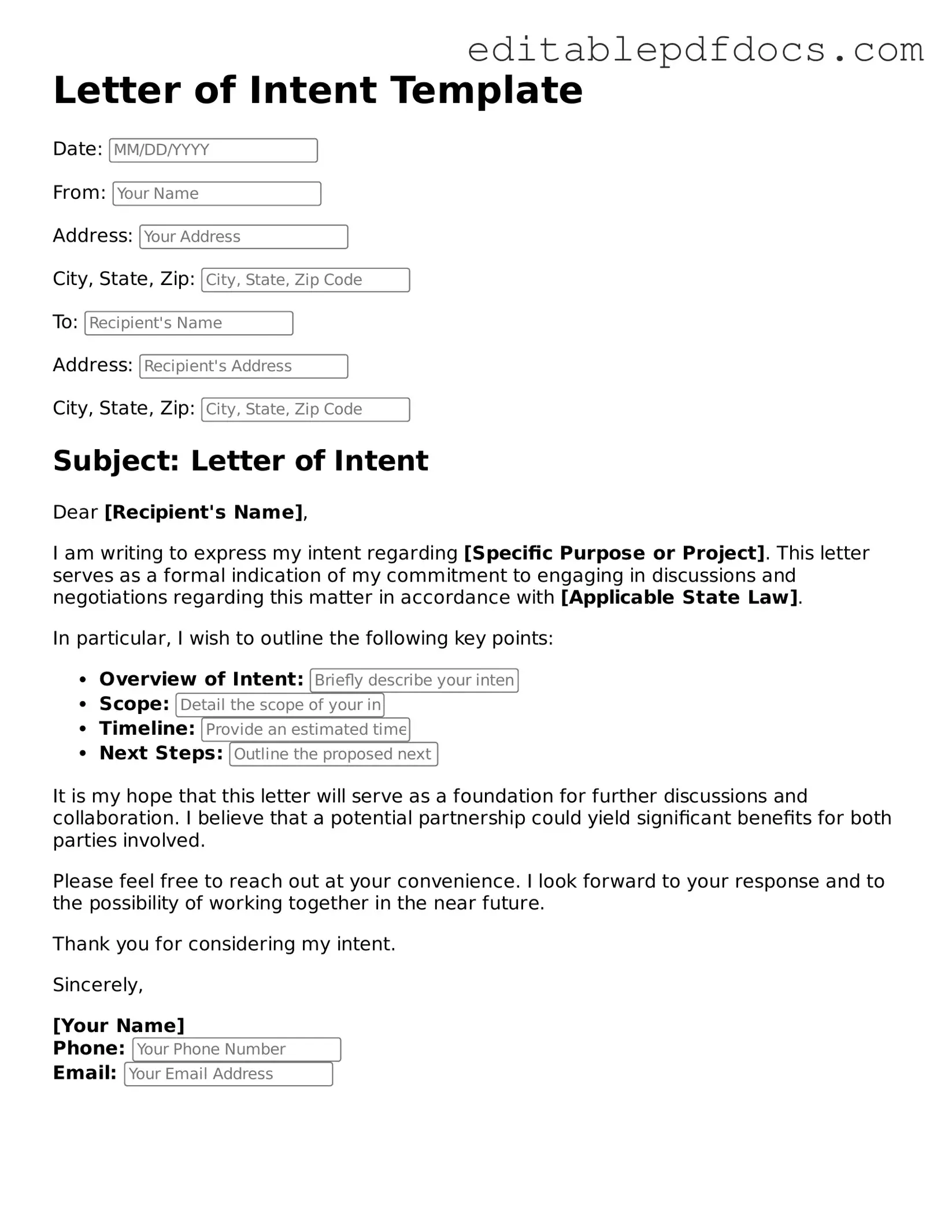The Letter of Intent (LOI) serves as a crucial document in various business and legal transactions, laying the groundwork for future agreements. This form typically outlines the preliminary understanding between parties, detailing key elements such as the purpose of the agreement, the terms under consideration, and the expectations of each party involved. It often includes timelines, confidentiality clauses, and any conditions that must be met before a formal contract is executed. While not legally binding in most cases, the LOI provides a framework that guides negotiations and helps prevent misunderstandings. By clearly stating intentions, it fosters transparency and trust between the parties, ultimately facilitating smoother and more efficient dealings. Understanding the components and significance of the LOI is essential for anyone engaged in business negotiations or transactions.
